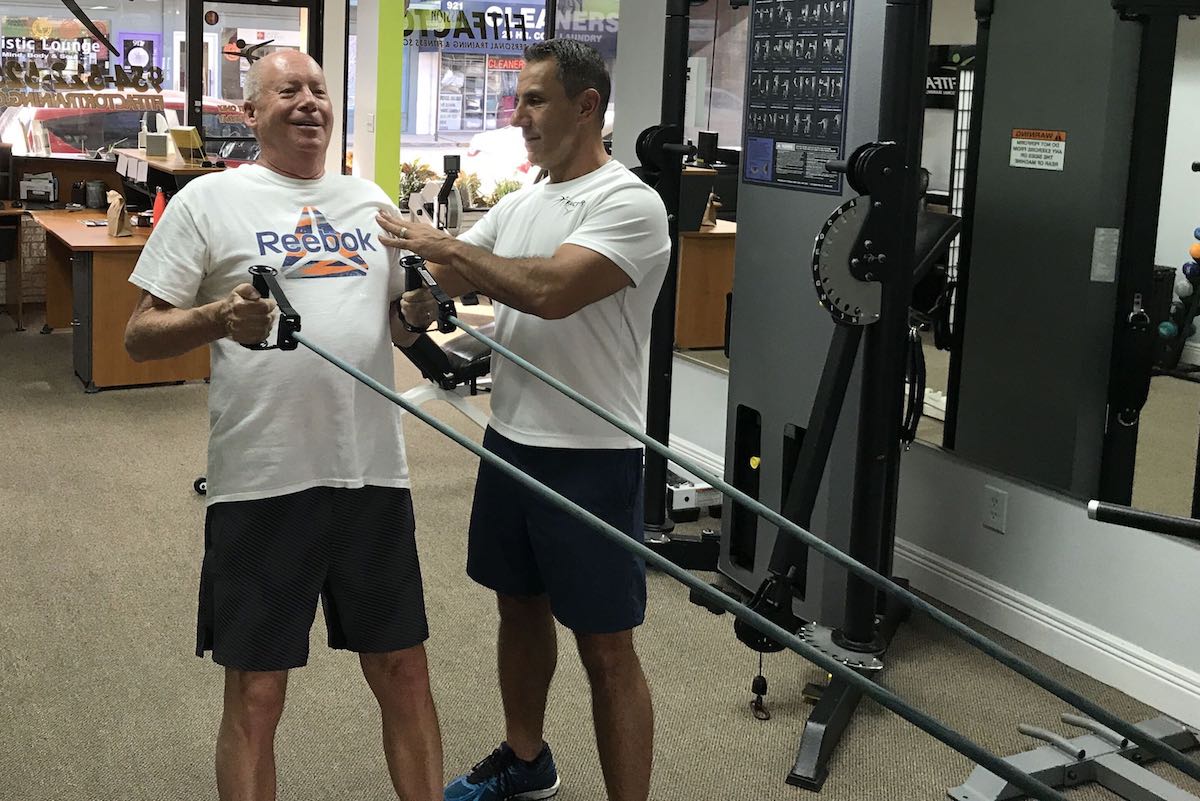Exercise Plays a Crucial Role in Preventing, Treating Diabetes
Wed. Nov 13, 2019
Read in 3 minutes
Although dietary changes are usually the primary intervention for diabetes, an exercise program is an essential compliment.

Ten years ago, Alan Rosenthal was a fit 60-year-old who had just returned from a long bicycle trip through France.
Then a simple blood test revealed type 2 diabetes.
His doctor gave him a three-day course on diet, exercise, and self-care for a diabetic. The doctor also recommended a local trainer. And, even though Alan knew his way around a gym, he adopted a new perspective and learned workouts to keep him healthy.
“My goals were different when I was younger,” says Alan, who enjoys an active lifestyle in Fort Lauderdale with his husband, 73, who is not diabetic. “Our social life revolves around meals and eating, so there are challenges. But as time wears on, we’ve adjusted how we eat and our exercise.”
November is American Diabetes Month, a great time to highlight the link between exercise, diet and the disease, including for people over age 50.

The American Diabetes Association says 30 million Americans have diabetes, the seventh leading cause of death in the United States. It can affect every decision, including what to eat, and requires steady attention and management. A person’s weight is a major factor. Exercise and proper eating are important in preventing and managing diabetes.
The ADA says we can take steps to prevent type 2, the most common form. “Stay at a healthy weight, eat well and be active. With these steps, you can stay healthier longer and lower your risk of diabetes.”
The ADA defines type 2 diabetes as “characterized by high blood glucose levels caused by either a lack of insulin or the body’s inability to use insulin efficiently. Type 2 diabetes develops most often in middle-aged and older adults but can appear in young people.”
Among Americans age 65 and older, 25.2 percent or 12 million people have diabetes, the ADA says. (Click here to see the National Diabetes Statistics Report.)
If you think you might be at risk, talk to your doctor. If you have been diagnosed, be sure to know about proper eating and exercising and take care of yourself every day.
How exercise helps Physical activity:
- Helps lower blood glucose, blood pressure, HDL cholesterol and triglycerides
- Lowers risk for pre-diabetes, type 2 diabetes, heart disease and stroke
- Relieves stress
- Strengthens the heart, muscles and bones
- Improves blood circulation and tones muscles
- Improves flexibility
And no, you’re not too old to start.
“Even if you’ve never exercised before, you can find ways to add physical activity to your day,” the ADA says. “Even if your activities aren’t strenuous, you’ll still get health benefits.”
Regular physical activity is important for everyone, but it is especially important for people with diabetes and those at risk for it, the ADA says. “Get active and stay active by doing things you enjoy, from gardening to playing tennis to walking with friends.”
For Alan, that means working out with his trainer twice a week. He also enjoys biking, swimming, and walking.
Paulo credits Alan’s determination and focus in all aspects of managing his illness – exercise, diet, checking his blood sugar, speaking with his doctor.
“Exercise has helped him have a better understanding of what he does and how he eats – a little bit of peace of mind, that his diabetes is more controllable,” Paulo says.
Paulo often modifies the workout or certain exercises, depending on how Alan’s feeling.
Alan also has cut back on red meat, and has added protein to breakfasts, instead of just carbohydrates, like cereal and orange juice.
“I realize the importance of exercise in controlling my blood sugar,” Alan says. “As I look at my diabetes, the way I eat and the way I exercise… they go hand in hand.”